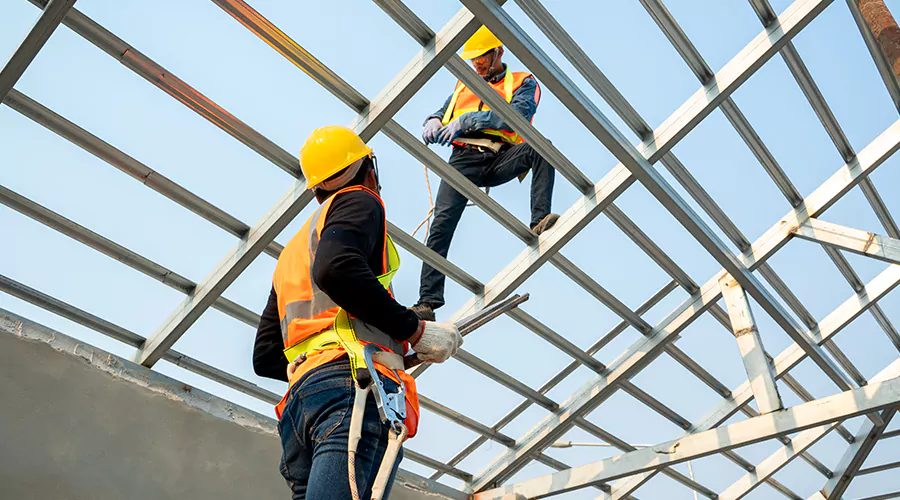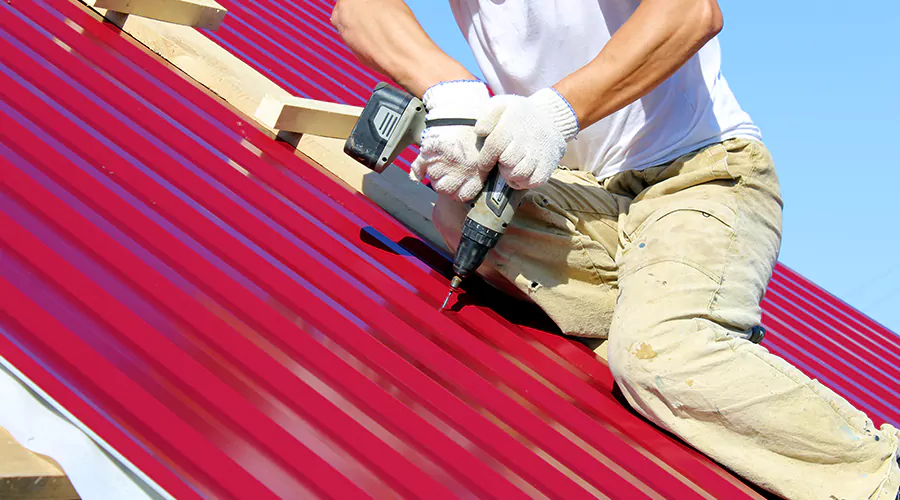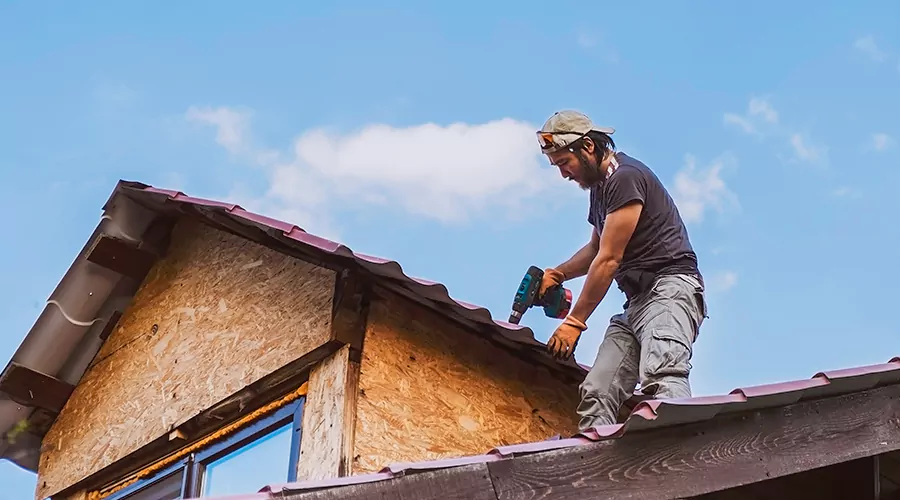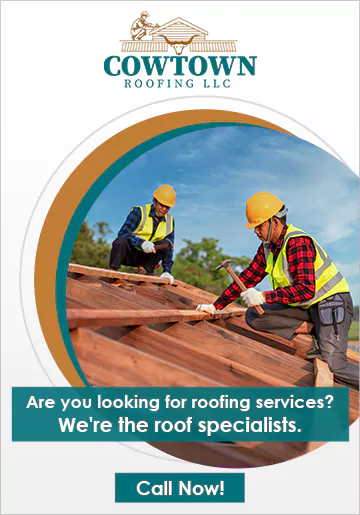Commercial roofing is a crucial aspect of maintaining a secure and efficient business environment. A sturdy and reliable roof not only protects the physical assets within a commercial space but also ensures the safety and well-being of employees and customers. This blog explores various commercial roofing solutions, emphasizing their reliability and long-term benefits for businesses.
Understanding the Importance of Commercial Roofing
Commercial roofing plays a pivotal role in safeguarding the integrity and longevity of businesses. Beyond serving as a protective shield against the elements, a robust commercial roof ensures the safety of assets housed within a commercial space and fosters a secure environment for employees and customers. Compliance with building codes and regulations is closely tied to the structural soundness of the roof, making it an integral aspect of legal and safety considerations for businesses. Furthermore, the energy efficiency attributes of a well-maintained roof contribute to cost savings and sustainable business practices.
Types of Commercial Roofing Solutions
Single-Ply Roofing Systems
Single-ply roofing systems, including materials such as TPO (Thermoplastic Olefin) and EPDM (Ethylene Propylene Diene Monomer), stand out as versatile and reliable choices in the realm of commercial roofing solutions. Known for their ease of installation, these membranes offer a seamless protective barrier for commercial structures. TPO exhibits exceptional resistance to UV rays and high reflectivity, contributing to energy efficiency and cost savings. On the other hand, EPDM, with its flexibility and durability, provides a robust shield against weather elements. Single-ply roofing systems are particularly favored for their lightweight nature, making them suitable for a range of building structures. While considering factors such as installation costs, climate adaptability, and maintenance requirements is crucial, the overall benefits of these systems in terms of longevity and performance make them a popular choice for businesses seeking reliable and efficient roofing solutions.
Metal Roofing
Metal roofing stands out as a resilient and enduring option within the spectrum of commercial roofing solutions. Renowned for its exceptional longevity and durability, metal roofs offer businesses a robust defense against the elements. With resistance to fire, extreme weather conditions, and pests, metal roofing ensures a secure and low-maintenance solution for commercial structures. Although the initial cost of installation may be higher compared to some alternatives, the long-term benefits outweigh this investment, providing a cost-effective solution over the life of the roof. Furthermore, metal roofs contribute to energy efficiency by reflecting sunlight and reducing heat absorption, making them environmentally friendly and potentially leading to reduced cooling costs.

Built-Up Roofing (BUR)
Built-Up Roofing (BUR) stands as a time-tested and robust commercial roofing solution, known for its durability and weather-resistant properties. Comprising multiple layers of bitumen alternated with reinforcing fabrics, BUR systems create a seamless and sturdy membrane that effectively shields commercial structures from the elements. This roofing type boasts high resistance to adverse weather conditions, including rain, wind, and hail. Its fire-retardant nature further enhances the safety profile of the structure. While the installation process can be more complex compared to some alternatives, the longevity and resilience of BUR make it a cost-effective choice over the long term.
Green Roofing
Green roofing has emerged as an innovative and environmentally conscious solution within the realm of commercial roofing. By integrating living vegetation into the roofing system, green roofs provide a range of benefits beyond traditional roofing solutions. These roofs act as a natural insulator, regulating indoor temperatures and reducing energy consumption. The aesthetic appeal and biodiversity they introduce contribute to a more pleasant and sustainable urban environment. Despite considerations such as structural support and maintenance costs, the positive impact on air quality, stormwater management, and the overall ecological balance make green roofing an attractive choice for businesses aiming to enhance their sustainability profile. Beyond functional advantages, businesses investing in green roofing also stand to gain a competitive edge by aligning with increasingly prevalent environmental values and demonstrating a commitment to eco-friendly practices.
Factors Influencing Commercial Roofing Decisions
Climate and Weather Conditions
The geographical location of a commercial property directly influences the roofing system's performance and durability. Adaptability to specific climates is paramount, with factors such as wind resistance, snow load capacity, and resistance to extreme temperatures becoming crucial considerations. For instance, areas prone to heavy snowfall may benefit from roofing materials designed to bear substantial loads, while regions with high temperatures may require solutions that offer superior heat reflectivity. The ability of a roofing system to withstand the prevailing weather conditions not only ensures the long-term functionality of the structure but also mitigates the risk of damage caused by climate-related factors. Businesses must carefully assess their local climate and weather patterns to select a roofing solution that guarantees optimal performance and resilience in the face of environmental challenges.
Budgetary Considerations
Budgetary considerations stand as a pivotal factor influencing commercial roofing decisions for businesses. The initial costs of installing a roofing system, coupled with long-term expenses such as maintenance and potential repairs, directly impact the financial feasibility of a roofing solution. Businesses must weigh the upfront investment against the projected lifespan and benefits of the chosen roofing material. While some options may have a higher initial cost, they might prove more cost-effective over time due to lower maintenance requirements and increased durability. A thorough cost-benefit analysis helps businesses make informed decisions, ensuring that the chosen roofing solution aligns with their budget constraints while providing the necessary protection and longevity for the commercial structure. Striking a balance between upfront expenditures and long-term savings is crucial for businesses looking to maximize the value and efficiency of their commercial roofing investment.
Roofing System Lifespan
The lifespan of a roofing system emerges as a critical factor influencing commercial roofing decisions, as businesses seek to make choices that align with long-term operational goals. Understanding the expected longevity of various roofing materials is essential in determining the overall cost-effectiveness of a solution. While some materials may have higher upfront costs, they often offer extended lifespans, minimizing the need for frequent replacements and associated expenses. Businesses looking for sustainable and financially prudent options prioritize roofing systems that can withstand the test of time, reducing the likelihood of disruptions and unplanned expenditures due to premature deterioration.
Maintenance and Sustainability
Regular Roof Inspections
By routinely inspecting the roof, businesses can address issues such as leaks, damaged membranes, or deteriorating flashing promptly, preventing water intrusion and structural damage. Regular inspections contribute to the sustainability of the roofing system by extending its lifespan. Identifying and rectifying minor issues early on not only prevents costly repairs but also ensures that the roof continues to perform optimally, maintaining its energy efficiency and protective qualities. Sustainable roofing practices involve minimizing waste and maximizing the lifespan of materials, and regular inspections align with this ethos by promoting a proactive approach to maintenance, ultimately contributing to the long-term sustainability of the commercial roofing system. Businesses are encouraged to engage professional roofing contractors for these inspections to ensure a thorough evaluation and timely maintenance actions.

Sustainable Roofing Practices
In the realm of commercial roofing, sustainable practices are integral to both maintenance and long-term sustainability. Adopting environmentally conscious approaches, such as using recycled or recyclable materials, installing energy-efficient insulation, and incorporating green roofing solutions, contributes to the overall ecological balance. Beyond initial installation, sustainable roofing practices also encompass regular maintenance, emphasizing proactive measures to extend the lifespan of the roofing system. This includes routine inspections, prompt repairs, and adherence to eco-friendly maintenance processes. By embracing sustainable practices, businesses not only reduce their environmental footprint but also benefit from cost savings through improved energy efficiency and reduced material waste. Sustainable roofing is a holistic approach that aligns with both present-day environmental concerns and long-term business objectives, fostering resilient and environmentally responsible commercial infrastructures.
Choosing the right commercial roofing solution is a critical decision that impacts a business's overall functionality, safety, and longevity. By understanding the various roofing options, considering factors such as climate and budget, and prioritizing maintenance and sustainability, businesses can make informed decisions that contribute to their long-term success. Invest in a reliable commercial roofing solution today to secure a stable and resilient future for your business.

